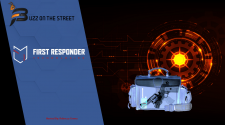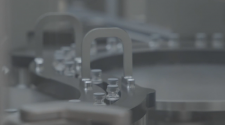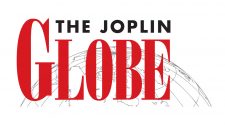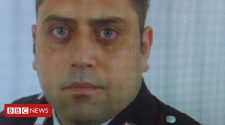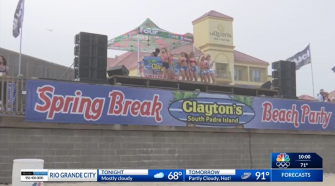It’s December in Iceland and 500 people are huddled together in a valley just off the Golden Circle tourist route.
But they’re not here to go sightseeing, they’re about to tackle the toughest race of their lives, one “designed to break the world’s best athletes”.
Over the next 24 hours they will run around a military-style obstacle course, completing as many laps as they can. And one of them could win $1m.
Welcome to the Spartan Ultra World Championship.
The race begins at midday with a 5km prologue through the small town of Hveragerdi, 28 miles east of Reykjavik. It’s a hive of geothermal activity. Pillars of steam rise from hot springs.
There is one runner who qualifies for the top prize. Englishman Jon Albon will become a millionaire overnight if he wins the race and reaches 100 miles in the process. If rival Ryan Atkins does it instead, the Canadian will pocket at least $100,000.
Albon and Atkins are professional athletes from obstacle course racing (OCR). They have dominated this growing sport since 2010. Albon is a five-time world champion over 15km while Atkins is a five-time winner of the World’s Toughest Mudder event (WTM).
Both have hit the 100-mile mark at WTM, a 24-hour race in Las Vegas, but now they’re in the land of fire and ice, in winter. There will be 20 hours of darkness and sub-zero temperatures.
This is OCR’s biggest cash prize by far and in the build-up Albon has received more media attention than ever before. Unassuming, he is happy to blend in with the crowd at the start line. Atkins, though, is at the front of the pack. He is more comfortable with the spotlight.
The runners return with Albon and Atkins at the front as they start the first lap. The course is 6.6 miles long with 25 man-made obstacles and an elevation gain of 370 metres per lap. If anyone does manage to reach 100 miles, they will have climbed more than 5,500 metres and overcome 375 obstacles.
The weather is on their side. It’s dry, but snow has already fallen on the higher ground and Albon and Atkins are immediately trudging through it as they go straight into the first hill climb, which has a 40-degree incline.
Once at the top they can run along the plateau, through thicker, soft snow. Coming down is a different matter. The route is partially frozen, with tree roots protruding from the ground. In some areas Spartan have installed ropes to aid the descent.
Albon and Atkins negotiate it safely, others aren’t so lucky. Some are sent into the trees below and suffer injuries that force them out, on the first lap.
The pair soon confront the first series of obstacles. Emerging from a copse at the bottom of the hill, at around the two-mile mark, they come thick and fast. There are 13 crammed into the next mile and a half, testing almost every muscle in their bodies.
They must crawl under, climb over and swing across whatever stands in their way. Plus there are eight ‘carry’, ‘drag’ or ‘hoist’ obstacles, involving atlas stones, weighted buckets and sandbags.
Atkins later says the course is the toughest he’s ever raced, for three reasons: “The heavy carries, the slippery terrain and the super steep climb and descent.” All take their toll.
The second climb loops behind the event village across a lava field. It’s not as high as the first but it’s mossy, rocky ground. Then just before entering the warm haven of the transition area there are four obstacles back to back.
Now they can get a breather, grab a snack and get ready to do it all over again. And again. And again. But they can’t stop for long.
It’s clear after the first lap – this is a race against time. Albon and Atkins end it seconds apart in around 90 minutes. They have to average under one hour 34 minutes per lap to reach 100 miles in 24 hours.
They know they have the stamina. During the off season, they build their baseline fitness mainly through ski-mountaineering (skimo) and cross-country skiing, then maintain it through the race season.
Atkins competes in Spartan’s US national series, OCR’s best organised and most lucrative events, but this race, the season-ending Ultra World Championship, was his main goal for 2018. Eight weeks out, he began to hone for Iceland. He spent two weeks alone in the Adirondack mountains in New York state, “training like Rocky Balboa, just getting out every day and going crazy”.
Albon, meanwhile, had been clocking up the air miles. He lives in Norway and splits his schedule between OCR and the Skyrunner World Series – ultra-marathons across mountains. He had just become the skyrunning world champion and had also defended his OCR world title.
To claim the $1m prize on offer, you had to win all three of Spartan’s world championship events and run 100 miles in Iceland. Albon won the first two, over shorter distances at Lake Tahoe, in the Sierra Nevada mountains, and Sparta in Greece.
While Atkins headed to Iceland in the best shape he’d ever been in, Albon was too busy racing to do any specific training. He had also made a pact with his body. It had served him well in 2018 and he didn’t want to risk missing winter training through injury. He said he’d stop if he fell off pace.
English performance coach Graham Roberts began working with Atkins last year and spoke to him at the start line.
“I gave him an image, of a road and a big board,” he says. “I asked him to populate that board with the words he wanted to concentrate on before that race. They were ‘steady, consistent, smart’.
“I then told him that, if he found himself deviating from the board during the race, to check back in with those key principles. It provided a foundation to tap back into throughout the race, because 24 hours is a long time to concentrate.”
Albon and Atkins had been maintaining a steady pace over the first few laps and, during the fifth, they run together.
Normally, Albon believes this is the point where you’re just getting over the worst of a 24-hour race. “In the first six hours you’re slowing screwing your body up,” he says. “You gradually get more sore and tired. Then once you’re screwed, you’re screwed, and your body accepts that.”
At this point, Albon and Atkins are still ahead of the target pace. But they are slowing down.
Spartan founder and chief executive Joe de Sena was also course-side in Iceland. After all, $1m of his money is on the line. As Albon comes through the tyre drag, De Sena asks: “Would you drop the million and take $50,000 for 90 miles?” He gives Albon until midnight to decide.
But then Albon suffers a fuelling problem. He is struggling to digest a freeze-dried camping meal, which he doesn’t normally eat mid-race, and he can’t get any energy back into his body.
Just after 10pm, he ends his million-dollar pursuit. He has completed six laps and 42.7 miles. The affable Englishman smiles as he tells Spartan’s social media team, who are live-streaming the event, “it’s pretty miserable out there”.
De Sena says: “I love getting in their head, it’s the weakest link we all have.” So was he worried he’d have to pay out the million?
“Absolutely. When Jon won the first two races I thought ‘we are screwed’. But on the day I was also subconsciously cheering for him. I couldn’t understand my emotions.”
Albon has no regrets. “I’ve run for 24 hours before so I wasn’t on a journey of self-discovery, I was there to try to win the money and do 100 miles,” he says. “I was only properly on pace for three laps. I kept going and ran with Ryan for a bit but my heart wasn’t in it anymore. I was done.”
The million is safe, but if Atkins hits 100 miles he gets $100,000. He must now go it alone as he enters what endurance athletes call the ‘pain cave’.
“The pain’s horrible at this point, although Ryan wouldn’t necessarily show it,” says his coach Roberts. “Endurance athletes like Ryan can contextualise that pain, they find a way to keep going in some, quite frankly, disgusting situations. You relax a bit and your body gets comfortable with what this pain cave actually is.”
Atkins starts to dip below the target pace. De Sena offers $25,000 for 90 miles to “keep the race alive”. The temperature drops below zero, the course is churned up, but even though he knows the $100,000 is “slowly slipping away”, Atkins keeps a steady rhythm through the night. His lap times are between 1:44:00 and 1:49:00.
“I was on auto-pilot, making small, intermediate goals,” he says. “Whether it was doing the next carry in so many minutes or not failing this obstacle which is getting coated in ice and harder and harder.
“Each time I’d succeed I’d give myself a pat on the back and refocus on the next one. When you race like that you can stay in the moment and not become overwhelmed with the size of the task. The race flies by. I’m just out doing what I do.”
Roberts and Ryan’s wife Lindsay Webster, the female OCR world champion, also go to meet Atkins near the spear throw each lap. Another strategy.
“It’s a change of state,” says Roberts. “If you’re in a rhythm on your own for a long period of time, especially in dark, icy conditions, when something like a friendly face comes into your field of vision, it provides a break in stimulation and re-energises your brain. At that moment, that might be all it takes to keep the focus.”
After 10 laps, Atkins is so exhausted he’s slurring his words while discussing split times with Roberts. He keeps moving though.
“You almost forget how to talk, for the benefit of still being able to run,” he says. “I was definitely pushed into a really difficult place. Those last couple of laps I felt beat down, mentally and physically. But that’s why I love it. When you’re put in those situations you see what you’re made of.”
Having lapped the second-placed athlete, Atkins knows he’s done enough for the win. He stops at 9.30am, after 12 laps and 82.3 miles. He gets $6,000 for winning the race, plus a $10,000 bonus from De Sena in recognition of his efforts.
“It was crazy good from Ryan,” says Albon. “But half of the variables were in our favour and Ryan is the world’s best 24-hour obstacle racer so if he can’t get within 17 miles of 100 then I’d say it wasn’t just tough, it was impossible. I think Spartan wanted to make it more possible than it was.”
Some OCR enthusiasts believe Spartan never intended to make the $1m prize attainable, saying it was merely a publicity stunt. Atkins disagrees.
“Maybe they just missed the mark a little bit and made a course that was tougher than they anticipated,” he says. “But it was a special event to be part of and everyone who did it was challenged immensely. Having that goal to strive for is pretty cool.
“It’s like Eliud Kipchoge going for the two-hour marathon. So many people say it’s impossible, but he’s still trying. The Spartan goal is great because it forces us, as athletes, to go above and beyond what we’d normally do. I commend them for that.”
Spartan and Tough Mudder both staged their first race in the USA in 2010 and OCR is now a billion-dollar industry. They are the sport’s two global brands, with Spartan the biggest. They’ve had six million entrants worldwide and more than 1.2 million already this year.
Most entrants are part of a team, revelling in the shared suffering. But many running purists have dismissed OCR as a challenge rather than a competitive sport. Try telling that to De Sena.
Spartan races are timed, they have a ranking system and three world championship events. OCR sponsorship and prize money have allowed athletes to go full-time, and many are now migrating to OCR from other sports.
In turn, traditional running events like the World Cross Country Championships have become more extreme, and Albon continues to prove his ability elsewhere. In June he became the trail running world champion. Technically, he is now a world champion in three different sports – simultaneously.
“I love to push these athletes and support them,” says De Sena. “I want them to quit their jobs and take this seriously. We want to build a sport where athletes chase glory, money and a legacy.”
De Sena has long been campaigning for OCR to be made an Olympic sport, too. Governing body World OCR hopes to gain recognition from the International Olympic Committee in 2020 and with local organisers now able to propose new sports, Los Angeles 2028 is seen as a realistic target.
An Olympic format would most likely be a 5km race, but the challenge of running 100 miles in 24 hours remains. OCR and Spartan are still learning, still evolving. Noting feedback from 2018, Spartan have introduced a new points system which makes more athletes eligible for the $1m prize. There is more bonus money on offer too.
The 2019 Ultra World Championship will take place in November, at the Swedish ski resort of Are. It may be less barren than Iceland but there is more elevation for the race director to work with and potentially more snow.
“One thing’s for sure, we’re not going to make it easier,” De Sena says. “Of course it’s going to be hard, just like it’s hard to run a two-hour marathon or win the Super Bowl. But if you do it, there’s a million bucks waiting for you. I’m throwing out a crazy purse because I want to see the best of the sport come together and come after this incredible challenge.”
Whatever the weather, and however the course looks, hundreds of ‘Spartans’ will again flock to Scandinavia, ready to take it on.


